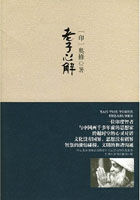From the tower where we are placed, the H?tel Saint-Pol, almost half hidden by the four great houses of which we have just spoken, was still very considerable and very marvellous to see.One could there distinguish, very well, though cleverly united with the principal building by long galleries, decked with painted glass and slender columns, the three H?tels which Charles V.had amalgamated with his palace:the H?tel du Petit-Muce, with the airy balustrade, which formed a graceful border to its roof; the H?tel of the Abbe de Saint-Maur, having the vanity of a stronghold, a great tower, machicolations, loopholes, iron gratings, and over the large Saxon door, the armorial bearings of the abb?between the two mortises of the drawbridge; the H?tel of the Comte d'Etampes, whose donjon keep, ruined at its summit, was rounded and notched like a cock's comb; here and there, three or four ancient oaks, forming a tuft together like enormous cauliflowers; gambols of swans, in the clear water of the fishponds, all in folds of light and shade; many courtyards of which one beheld picturesque bits; the H?tel of the Lions, with its low, pointed arches on short, Saxon pillars, its iron gratings and its perpetual roar; shooting up above the whole, the scale-ornamented spire of the Ave-Maria; on the left, the house of the Provost of Paris, flanked by four small towers, delicately grooved, in the middle; at the extremity, the H?tel Saint-Pol, properly speaking, with its multiplied fa?ades, its successive enrichments from the time of Charles V., the hybrid excrescences, with which the fancy of the architects had loaded it during the last two centuries, with all the apses of its chapels, all the gables of its galleries, a thousand weathercocks for the four winds, and its two lofty contiguous towers, whose conical roof, surrounded by battlements at its base, looked like those pointed caps which have their edges turned up.
Continuing to mount the stories of this amphitheatre of palaces spread out afar upon the ground, after crossing a deep ravine hollowed out of the roofs in the Town, which marked the passage of the Rue Saint-Antoine, the eye reached the house of Angoulême, a vast construction of many epochs, where there were perfectly new and very white parts, which melted no better into the whole than a red patch on a blue doublet.Nevertheless, the remarkably pointed and lofty roof of the modern palace, bristling with carved eaves, covered with sheets of lead, where coiled a thousand fantastic arabesques of sparkling incrustations of gilded bronze, that roof, so curiously damascened, darted upwards gracefully from the midst of the brown ruins of the ancient edifice; whose huge and ancient towers, rounded by age like casks, sinking together with old age, and rending themselves from top to bottom, resembled great bellies unbuttoned.Behind rose the forest of spires of the Palais des Tournelles.Not a view in the world, either at Chambord or at the Alhambra, is more magic, more aerial, more enchanting, than that thicket of spires, tiny bell towers, chimneys, weather-vanes, winding staircases, lanterns through which the daylight makes its way, which seem cut out at a blow, pavilions, spindle-shaped turrets, or, as they were then called, “tournelles, ”all differing in form, in height, and attitude.One would have pronounced it a gigantic stone chess-board.
To the right of the Tournelles, that truss of enormous towers, black as ink, running into each other and tied, as it were, by a circular moat; that donjon keep, much more pierced with loopholes than with windows; that drawbridge, always raised; that portcullis, always lowered, —is the Bastille. Those sorts of black beaks which project from between the battlements, and which you take from a distance to be cave spouts, are cannons.
Beneath them, at the foot of the formidable edifice, behold the Porte Sainte-Antoine, buried between its two towers.
Beyond the Tournelles, as far as the wall of Charles V., spread out, with rich compartments of verdure and of flowers, a velvet carpet of cultivated land and royal parks, in the midst of which one recognized, by its labyrinth of trees and alleys, the famous Daedalus garden which Louis XI. had given to Coictier.The doctor's observatory rose above the labyrinth like a great isolated column, with a tiny house for a capital.Terrible astrologies took place in that laboratory.
There to-day is the Place Royale.
As we have just said, the quarter of the palace, of which we have just endeavored to give the reader some idea by indicating only the chief points, filled the angle which Charles V.'s wall made with the Seine on the east. The centre of the Town was occupied by a pile of houses for the populace.It was there, in fact, that the three bridges disgorged upon the right bank, and bridges lead to the building of houses rather than palaces.That congregation of bourgeois habitations, pressed together like the cells in a hive, had a beauty of its own.It is with the roofs of a capital as with the waves of the sea, —they are grand.First the streets, crossed and entangled, forming a hundred amusing figures in the block; around the market-place, it was like a star with a thousand rays.
The Rues Saint-Denis and Saint-Martin, with their innumerable ramifications, rose one after the other, like trees intertwining their branches; and then the tortuous lines, the Rues de la Platrerie, de la Verrerie, de la Tixeranderie, etc., meandered over all.There were also fine edifices which pierced the petrified undulations of that sea of gables.At the head of the Pont aux Changeurs, behind which one beheld the Seine foaming beneath the wheels of the Pont aux Meuniers, there was the Chalelet, no longer a Roman tower, as under Julian the Apostate, but a feudal tower of the thirteenth century, and of a stone so hard that the pickaxe could not break away so much as the thickness of the fist in a space of three hours; there was the rich square bell tower of Saint-Jacques de la Boucherie, with its angles all frothing with carvings, already admirable, although it was not finished in the fifteenth century.There was the Maison-aux-Piliers, the Pillar House, opening upon that Place de Grève of which we have given the reader some idea; there was Saint-Gervais, which a front“in good taste”has since spoiled; Saint-Méry, whose ancient pointed arches were still almost round arches; Saint-Jean, whose magnificent spire was proverbial; there were twenty other monuments, which did not disdain to bury their wonders in that chaos of black, deep, narrow streets.Add the crosses of carved stone, more lavishly scattered through the squares than even the gibbets; the cemetery of the Innocents, whose architectural wall could be seen in the distance above the roofs; the pillory of the Markets, whose top was visible between two chimneys of the Rue de la Cossonnerie; the ladder of the Croix-du-Trahoir, in its square always black with people; the circular buildings of the wheat mart; the fragments of Philip Augustus's ancient wall, which could be made out here and there, drowned among the houses, its towers gnawed by ivy, its gates in ruins, with crumbling and deformed stretches of wall; the quay with its thousand shops, and its bloody knacker's yards; the Seine encumbered with boats, from the Port au Foin to Port-l'Evéque, and you will have a confused picture of what the central trapezium of the Town was like in 1482.
With these two quarters, one of H?tels, the other of houses, the third feature of aspect presented by the city was a long zone of abbeys, which bordered it in nearly the whole of its circumference, from the rising to the setting sun, and, behind the circle of fortifications which hemmed in Paris, formed a second interior enclosure of convents and chapels.Thus, immediately adjoining the park des Tournelles, between the Rue Saint-Antoine and the Vielle Rue du Temple, there stood Sainte-Catherine, with its immense cultivated lands, which were terminated only by the wall of Paris.Between the old and the new Rue du Temple, there was the Temple, a sinister group of towers, lofty, erect, and isolated in the middle of a vast, battlemented enclosure.Between the Rue Neuve-du-Temple and the Rue Saint-Martin, there was the Abbey of Saint-Martin, in the midst of its gardens, a superb fortified church, whose girdle of towers, whose diadem of bell towers, yielded in force and splendor only to Saint-Germain des Prés.Between the Rue Saint-Martin and the Rue Saint-Denis, spread the enclosure of the Trinit?
Lastly, between the Rue Saint-Denis, and the Rue Montorgueil, stood the Filles-Dieu.On one side, the rotting roofs and unpaved enclosure of the Cour des Miracles could be descried. It was the sole profane ring which was linked to that devout chain of convents.
Finally, the fourth compartment, which stretched itself out in the agglomeration of the roofs on the right bank, and which occupied the western angle of the enclosure, and the banks of the river down stream, was a fresh cluster of palaces and H?tels pressed close about the base of the Louvre.The old Louvre of Philip Augustus, that immense edifice whose great tower rallied about it three and twenty chief towers, not to reckon the lesser towers, seemed from a distance to be enshrined in the Gothic roofs of the H?tel d'Alen?on, and the Petit-Bourbon.This hydra of towers, giant guardian of Paris, with its four and twenty heads, always erect, with its monstrous haunches, loaded or scaled with slates, and all streaming with metallic reflections, terminated with wonderful effect the configuration of the Town towards the west.
Thus an immense block, which the Romans called iusula, or island, of bourgeois houses, flanked on the right and the left by two blocks of palaces, crowned, the one by the Louvre, the other by the Tournelles, bordered on the north by a long girdle of abbeys and cultivated enclosures, all amalgamated and melted together in one view; upon these thousands of edifices, whose tiled and slated roofs outlined upon each other so many fantastic chains, the bell towers, tattooed, fluted, and ornamented with twisted bands, of the four and forty churches on the right bank; myriads of cross streets; for boundary on one side, an enclosure of lofty walls with square towers; on the other, the Seine, cut by bridges, and bearing on its bosom a multitude of boats; behold the Town of Paris in the fifteenth century.
Beyond the walls, several suburban villages pressed close about the gates, but less numerous and more scattered than those of the University. Behind the Bastille there were twenty hovels clustered round the curious sculptures of the Croix-Faubin and the flying buttresses of the Abbey of Saint-Antoine des Champs; then Popincourt, lost amid wheat fields; then la Courtille, a merry village of wine-shops; the hamlet of Saint-Laurent with its church whose bell tower, from afar, seemed to add itself to the pointed towers of the Porte Saint-Martin; the Faubourg Saint-Denis, with the vast enclosure of Saint-Ladre; beyond the Montmartre Gate, the Grange-Batelière, encircled with white walls; behind it, with its chalky slopes, Montmartre, which had then almost as many churches as windmills, and which has kept only the windmills, for society no longer demands anything but bread for the body.Lastly, beyond the Louvre, the Faubourg Saint-Honor?already considerable at that time, could be seen stretching away into the fields, and Petit-Bretagne gleaming green, and the March?aux Pourceaux spreading abroad, in whose centre swelled the horrible apparatus used for boiling counterfeiters.Between la Courtille and Saint-Laurent, your eye had already noticed, on the summit of an eminence crouching amid desert plains, a sort of edifice which resembled from a distance a ruined colonnade, mounted upon a basement with its foundation laid bare.This was neither a Parthenon, nor a temple of the Olympian Jupiter.It was Montfaucon.
Now, if the enumeration of so many edifices, summary as we have endeavored to make it, has not shattered in the reader's mind the general image of old Paris, as we have constructed it, we will recapitulate it in a few words. In the centre, the island of the City, resembling as to form an enormous tortoise, and throwing out its bridges with tiles for scales; like legs from beneath its gray shell of roofs.On the left, the monolithic trapezium, firm, dense, bristling, of the University; on the right, the vast semicircle of the Town, much more intermixed with gardens and monuments.The three blocks, city, university, and town, marbled with innumerable streets.Across all, the Seine, “foster-mother Seine, ”as says Father Du Breul, blocked with islands, bridges, and boats.All about an immense plain, patched with a thousand sorts of cultivated plots, sown with fine villages.On the left, Issy, Vanvres, Vaugirarde, Montrouge, Gentilly, with its round tower and its square tower, etc.; on the right, twenty others, from Conflans to Ville-l'Evéque.On the horizon, a border of hills arranged in a circle like the rim of the basin.Finally, far away to the east, Vincennes, and its seven quadrangular towers to the south, Bicêtre and its pointed turrets; to the north, Saint-Denis and its spire; to the west, Saint Cloud and its donjon keep.Such was the Paris which the ravens, who lived in 1482, beheld from the summits of the towers of Notre-Dame.
Nevertheless, Voltaire said of this city, that“before Louis XIV., it possessed but four fine monuments”:the dome of the Sorbonne, the Val-de-Grace, the modern Louvre, and I know not what the fourth was—the Luxembourg, perhaps.Fortunately, Voltaire was the author of“Candide”in spite of this, and in spite of this, he is, among all the men who have followed each other in the long series of humanity, the one who has best possessed the diabolical laugh.Moreover, this proves that one can be a fine genius, and yet understand nothing of an art to which one does not belong.Did not Moliere imagine that he was doing Raphael and Michael-Angelo a very great honor, by calling them“those Mignards of their age?”
Let us return to Paris and to the fifteenth century.
It was not then merely a handsome city; it was a homogeneous city, an architectural and historical product of the Middle Ages, a chronicle in stone. It was a city formed of two layers only; the Romanesque layer and the Gothic layer; for the Roman layer had disappeared long before, with the exception of the Hot Baths of Julian, where it still pierced through the thick crust of the Middle Ages.As for the Celtic layer, no specimens were any longer to be found, even when sinking wells.
Fifty years later, when the Renaissance began to mingle with this unity which was so severe and yet so varied, the dazzling luxury of its fantasies and systems, its debasements of Roman round arches, Greek columns, and Gothic bases, its sculpture which was so tender and so ideal, its peculiar taste for arabesques and acanthus leaves, its architectural paganism, contemporary with Luther, Paris, was perhaps, still more beautiful, although less harmonious to the eye, and to the thought.
But this splendid moment lasted only for a short time; the Renaissance was not impartial; it did not content itself with building, it wished to destroy; it is true that it required the room. Thus Gothic Paris was complete only for a moment.Saint-Jacques de la Boucherie had barely been completed when the demolition of the old Louvre was begun.
After that, the great city became more disfigured every day. Gothic Paris, beneath which Roman Paris was effaced, was effaced in its turn; but can any one say what Paris has replaced it?
There is the Paris of Catherine de Medicis at the Tuileries; —the Paris of Henri II., at the H?tel de Ville, two edifices still in fine taste; —the Paris of Henri IV., at the Place Royale:fa?ades of brick with stone corners, and slated roofs, tri-colored houses; —the Paris of Louis XIII., at the Val-de-Grace:a crushed and squat architecture, with vaults like basket-handles, and something indescribably pot-bellied in the column, and thickset in the dome; —the Paris of Louis XIV., in the Invalides:grand, rich, gilded, cold; —the Paris of Louis XV., in Saint-Sulpice:volutes, knots of ribbon, clouds, vermicelli and chiccory leaves, all in stone; —the Paris of Louis XVI., in the Pantheon:Saint Peter of Rome, badly copied; —the Paris of the Republic, in the School of Medicine:a poor Greek and Roman taste, which resembles the Coliseum or the Parthenon as the constitution of the year III., resembles the laws of Minos, —it is called in architecture, “the Messidor”taste; —the Paris of Napoleon in the Place Vendome:this one is sublime, a column of bronze made of cannons; —the Paris of the Restoration, at the Bourse:a very white colonnade supporting a very smooth frieze; the whole is square and cost twenty millions.
To each of these characteristic monuments there is attached by a similarity of taste, fashion, and attitude, a certain number of houses scattered about in different quarters and which the eyes of the connoisseur easily distinguishes and furnishes with a date. When one knows how to look, one finds the spirit of a century, and the physiognomy of a king, even in the knocker on a door.
The Paris of the present day has then, no general physiognomy. It is a collection of specimens of many centuries, and the finest have disappeared.The capital grows only in houses, and what houses!At the rate at which Paris is now proceeding, it will renew itself every fifty years.
Thus the historical significance of its architecture is being effaced every day. Monuments are becoming rarer and rarer, and one seems to see them gradually engulfed, by the flood of houses.Our fathers had a Paris of stone; our sons will have one of plaster.
So far as the modern monuments of new Paris are concerned, we would gladly be excused from mentioning them.It is not that we do not admire them as they deserve.The Sainte-Geneviève of M.Soufflot is certainly the finest Savoy cake that has ever been made in stone.The Palace of the Legion of Honor is also a very distinguished bit of pastry.The dome of the wheat market is an English jockey cap, on a grand scale.The towers of Saint-Sulpice are two huge clarinets, and the form is as good as any other; the telegraph, contorted and grimacing, forms an admirable accident upon their roofs. Saint-Roch has a door which, for magnificence, is comparable only to that of Saint-Thomas d'Aquin.It has, also, a crucifixion in high relief, in a cellar, with a sun of gilded wood.These things are fairly marvellous.The lantern of the labyrinth of the Jardin des Plantes is also very ingenious.
As for the Palace of the Bourse, which is Greek as to its colonnade, Roman in the round arches of its doors and windows, of the Renaissance by virtue of its flattened vault, it is indubitably a very correct and very pure monument; the proof is that it is crowned with an attic, such as was never seen in Athens, a beautiful, straight line, gracefully broken here and there by stovepipes. Let us add that if it is according to rule that the architecture of a building should be adapted to its purpose in such a manner that this purpose shall be immediately apparent from the mere aspect of the building, one cannot be too much amazed at a structure which might be indifferently—the palace of a king, a chamber of communes, a town-hall, a college, a riding-school, an academy, a warehouse, a court-house, a museum, a barracks, a sepulchre, a temple, or a theatre.However, it is an Exchange.An edifice ought to be, moreover, suitable to the climate.This one is evidently constructed expressly for our cold and rainy skies.It has a roof almost as flat as roofs in the East, which involves sweeping the roof in winter, when it snows; and of course roofs are made to be swept.As for its purpose, of which we just spoke, it fulfils it to a marvel; it is a bourse in France as it would have been a temple in Greece.It is true that the architect was at a good deal of trouble to conceal the clock face, which would have destroyed the purity of the fine lines of the front; but, on the other hand, we have that colonnade which circles round the edifice and under which, on days of high religious ceremony, the theories of the stock-brokers and the courtiers of commerce can be developed so majestically.
These are very superb structures. Let us add a quantity of fine, amusing, and varied streets, like the Rue de Rivoli, and I do not despair of Paris presenting to the eye, when viewed from a balloon, that richness of line, that opulence of detail, that diversity of aspect, that grandiose something in the simple, and unexpected in the beautiful, which characterizes a checker-board.
However, admirable as the Paris of today may seem to you, reconstruct the Paris of the fifteenth century, call it up before you in thought; look at the sky athwart that surprising forest of spires, towers, and belfries; spread out in the centre of the city, tear away at the point of the islands, fold at the arches of the bridges, the Seine, with its broad green and yellow expanses, more variable than the skin of a serpent; project clearly against an azure horizon the Gothic profile of this ancient Paris. Make its contour float in a winter's mist which clings to its numerous chimneys; drown it in profound night and watch the odd play of lights and shadows in that sombre labyrinth of edifices; cast upon it a ray of light which shall vaguely outline it and cause to emerge from the fog the great heads of the towers; or take that black silhouette again, enliven with shadow the thousand acute angles of the spires and gables, and make it start out more toothed than a shark's jaw against a copper-colored western sky, —and then compare.
And if you wish to receive of the ancient city an impression with which the modern one can no longer furnish you, climb—on the morning of some grand festival, beneath the rising sun of Easter or of Pentecost—climb upon some elevated point, whence you command the entire capital; and be present at the wakening of the chimes. Behold, at a signal given from heaven, for it is the sun which gives it, all those churches quiver simultaneously.First come scattered strokes, running from one church to another, as when musicians give warning that they are about to begin.Then, all at once, behold!—for it seems at times, as though the ear also possessed a sight of its own, —behold, rising from each bell tower, something like a column of sound, a cloud of harmony.First, the vibration of each bell mounts straight upwards, pure and, so to speak, isolated from the others, into the splendid morning sky; then, little by little, as they swell they melt together, mingle, are lost in each other, and amalgamate in a magnificent concert.It is no longer anything but a mass of sonorous vibrations incessantly sent forth from the numerous belfries; floats, undulates, bounds, whirls over the city, and prolongs far beyond the horizon the deafening circle of its oscillations.
Nevertheless, this sea of harmony is not a chaos; great and profound as it is, it has not lost its transparency; you behold the windings of each group of notes which escapes from the belfries.You can follow the dialogue, by turns grave and shrill, of the treble and the bass; you can see the octaves leap from one tower to another; you watch them spring forth, winged, light, and whistling, from the silver bell, to fall, broken and limping from the bell of wood; you admire in their midst the rich gamut which incessantly ascends and re-ascends the seven bells of Saint-Eustache; you see light and rapid notes running across it, executing three or four luminous zigzags, and vanishing like flashes of lightning. Yonder is the Abbey of Saint-Martin, a shrill, cracked singer; here the gruff and gloomy voice of the Bastille; at the other end, the great tower of the Louvre, with its bass.The royal chime of the palace scatters on all sides, and without relaxation, resplendent trills, upon which fall, at regular intervals, the heavy strokes from the belfry of Notre-Dame, which makes them sparkle like the anvil under the hammer.At intervals you behold the passage of sounds of all forms which come from the triple peal of Saint-Germaine des Prés.Then, again, from time to time, this mass of sublime noises opens and gives passage to the beats of the Ave Maria, which bursts forth and sparkles like an aigrette of stars.Below, in the very depths of the concert, you confusedly distinguish the interior chanting of the churches, which exhales through the vibrating pores of their vaulted roofs.
Assuredly, this is an opera which it is worth the trouble of listening to. Ordinarily, the noise which escapes from Paris by day is the city speaking; by night, it is the city breathing; in this case, it is the city singing.Lend an ear, then, to this concert of bell towers; spread over all the murmur of half a million men, the eternal, plaint of the river, the infinite breathings of the wind, the grave and distant quartette of the four forests arranged upon the hills, on the horizon, like immense stacks of organ pipes; extinguish, as in a half shade, all that is too hoarse and too shrill about the central chime, and say whether you know anything in the world more rich and joyful, more golden, more dazzling, than this tumult of bells and chimes; —than this furnace of music, —than these ten thousand brazen voices chanting simultaneously in the flutes of stone, three hundred feet high, —than this city which is no longer anything but an orchestra, —than this symphony which produces the noise of a tempest.















